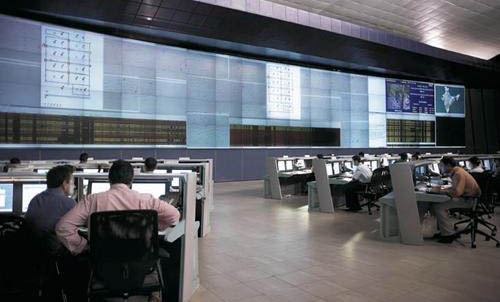By: Hariharan Ganesan, Senior Manager – Research & REIS, Jones Lang LaSalle India
 Jones Lang LaSalle’s REIS findings are in, and a closer look at the 1H12 data reveals relatively subdued activity during the period compared to 1H11. In 1H12, the top seven cities of India together recorded a 35% dip in absorption compared to 1H11. The contraction in demand caused developers to progress more slowly on their projects thereby aligning the supply with demand.
Jones Lang LaSalle’s REIS findings are in, and a closer look at the 1H12 data reveals relatively subdued activity during the period compared to 1H11. In 1H12, the top seven cities of India together recorded a 35% dip in absorption compared to 1H11. The contraction in demand caused developers to progress more slowly on their projects thereby aligning the supply with demand.
Supply fell by 52% during the period. As a result, contrary to the trend of 1H11, on a national level, demand for office space in 1H12 exceeded the office space supplied. However, this trend varied from city to city. The growing supply of the office markets of Mumbai and NCR-Delhi continued to outpace absorption while the other Indian cities mirrored the pan-India trend of demand outstripping supply during 1H12.
Mumbai (with a 32% share) was the top contributor to the total absorption in the pan-India region during 1H11. However, in 1H12, Mumbai only recorded 19% of the absorption, coming in second place compared to NCR-Delhi, which was responsible for 21%, an increase from the 18% figure it recorded in 1H11. The primary reason for this activity was healthy pre-commitments among the new completions in NCR-Delhi that were better than those in Mumbai. On average, the share of net absorption from the new completions during 1H12 in Mumbai and NCR-Delhi has remained around 60%, as opposed to the national average of 29%.
Backed by relatively healthy leasing activity, Bangalore, Chennai and Pune together accounted for nearly 45% of the pan-India absorption in 1H12, an increase from the 42% recorded in 1H11. Hyderabad and Kolkata together increased their total absorption from 8% in 1H11 to 14% in 1H12, primarily due to the penetration of good quality office buildings with moderate occupancy rates over the past few quarters. While Bangalore, Chennai and Pune recorded a drop in their vacancy rates during 1H12 compared to the levels of 1H11, other Indian cities recorded marginal rises in their vacancy rates on the back of mounting supply pressure.
Supply Overhang
Supply overhang will persist amid moderate pre-commitment levels in near term supply. Only 23% of the annual supply forecast for 2012 is operational in the top seven cities of India as at end-June, showing the impact slowing demand has had on the construction progress of the supply expected in the near term.
A greater share of the year’s supply is expected in 2H12 with moderate pre-commitments levels of less than 25% (as of 1H12), which will likely result in the national vacancy rates increasing from 16.9% to 20.3%, a rise of 340 basis points. This in turn is likely to restrict the extent to which rents and capital values can appreciate over the short term in select over-supplied sub-markets across India, keeping both marginally above their cyclical lows recorded during 2H10.
As a result, the strategic window of opportunity for office occupiers remains, as the country’s office market is likely to continue favouring tenants in the near term.





